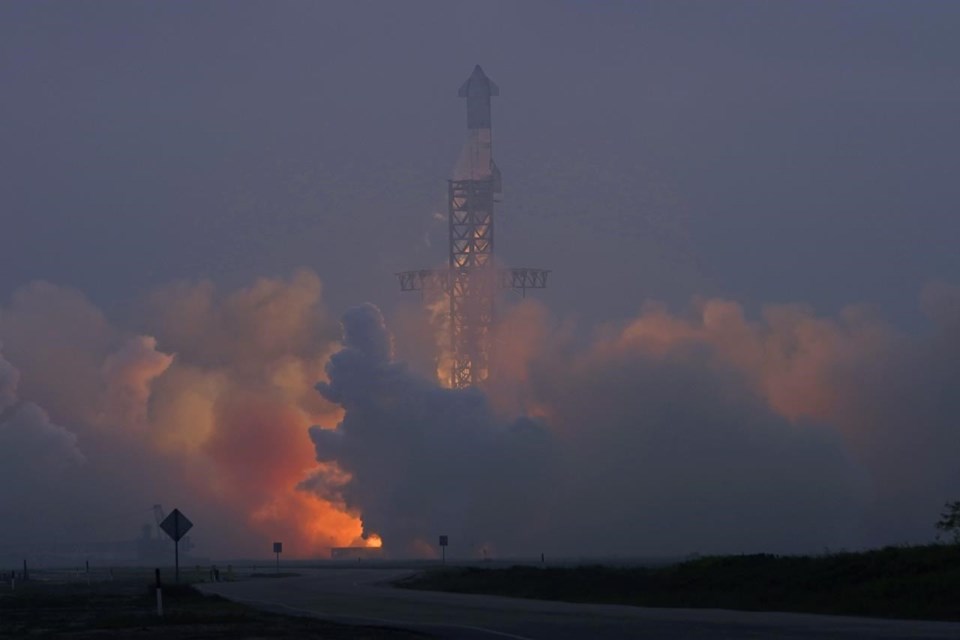Starship, the world’s most potent rocket, achieved unprecedented distance and speed during its third test flight on Thursday.
However, it was ultimately lost upon re-entry into the Earth’s atmosphere over the Indian Ocean, as reported by SpaceX. The launch from the Starbase facility in Texas occurred at 8:25 am local time (1325 GMT) and was broadcasted live, amassing over 3.5 million viewers on social media platform X.
This cutting-edge colossal rocket plays a pivotal role in NASA’s objectives to send astronauts to the Moon in the coming years, as well as Elon Musk’s aspirations for eventual Mars colonization.
In two previous trials, there were remarkable explosions; however, this isn’t necessarily negative. The company has employed a rapid trial-and-error method to expedite development, which has yielded success in the past. When combined, the two stages of the Starship rocket reach a height of 397 feet (121 meters), surpassing the Statue of Liberty by an impressive 90 feet.
The Super Heavy Booster generates 16.7 million pounds (74.3 Meganewtons) of thrust, nearly double that of the world’s second most powerful rocket, NASA’s Space Launch System (SLS). Although SLS is now certified, Starship continues its development as a prototype.
However, communication ceased when the spacecraft was 65 kilometers above sea level during its test flight, and it was declared “lost” before achieving its objective of splashing down in the water. Following this event, Elon Musk, the company’s billionaire founder, posted on social media, “Starship will make life multiplanetary,” highlighting the progress made in this test.
As for the third attempt, the initial “integrated” test took place in April 2023. Due to the failure of the two stages to separate, SpaceX was compelled to destroy the Starship just minutes after launch. The rocket disintegrated into a fireball, crashing into the Gulf of Mexico, and creating a dust cloud over a distant town.
The second test in November 2023 showed some improvement: The booster successfully separated from the spacecraft; however, both components then exploded over the ocean. SpaceX diplomatically referred to this as a “rapid unscheduled disassembly.”
SpaceX’s approach of conducting real-world tests rather than relying solely on laboratory settings has proven successful in the past. Their Falcon 9 rockets have become essential for NASA and commercial sectors, the Dragon capsule transports astronauts and cargo to the International Space Station, and the Starlink satellite constellation provides internet coverage across numerous countries.
However, the countdown is on for SpaceX to prepare for NASA’s planned lunar mission in 2026, utilizing a modified Starship as the landing vehicle for astronauts. Meanwhile, China is steadily advancing, aiming to land its first crew on the Moon by 2030.
SpaceX not only has to demonstrate the ability to securely launch, operate, and land their Starship; they must also, in the future, validate the feasibility of deploying multiple “Starship fuel tankers” into orbit. These tankers would then refuel the primary Starship for its extended voyage to lunar destinations.


